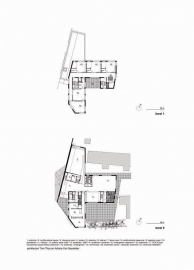St Ursula Laken primary school
The project definition at the design competition stage was unusually ambitious: the commissioning authorities wished to erect a school building in a complex location and on a tight budget. The building had to meet the following requirements:
- 2,090 square metres of building surface realized at a small and complex site
- a building of outstanding architectural quality and aesthetic appeal
- a project that embodied a sustainable and ecological vision (rational energy use)
- a building that could do double duty after hours for local community activities
- an infrastructural support system for the schools social ambitions (stimulate multiculturalism and participation)
Architecturally, the first challenge was to be as precise as possible in integrating the volume in its surroundings. As the requested program was exceptionally encompassing for the allotted site, elaborate model studies were used to arrive at an implantation of the utmost subtlety and an optimal relationship between the new volume and the surrounding buildings various scales. The volume is an intersection obtained from a projection of neighbouring cornices and planes of façades. The design is not readable instantly or unequivocally as a school; it could also be a large house.
Both in the design and development stages the request for sustainability received much attention. Besides retaining the green character of the site and ensuring rational energy use, we developed a longterm vision. A clear separation of support structure and fill-up walls and a well-considered system of techniques (HVAC) make it possible for the building to serve new functions in the future.
As the commissioning authorities wished to open the premises to after-hours activities and realize an open school, we organized the building internally to be used both as a school and a community centre. At ground level a series of half-open spaces of varying sizes and types were designed. These accommodate meetings of different kinds. The top floor, with its wonderful view of Brussels, was similarly reserved as a multifunctional space for common usage.
The use of materials on the interior underscores this double function. Public spaces were developed as neutrally as possible, whereas classrooms were given a domestic character and designed completely in multiplex, with maximum attention to detail. The classrooms are like intimate rooms at home.
We designed a playful space and intensified the spatial experience by creating multiple see-through perspectives and offering different possibilities for circulation. Children are invited to choose their own paths. To respond to childrens typical experience of the world, both interior and exterior windows were set at different heights on each floor.
A school offers a protected environment to a child; at the same time it prepares for entry in the real world. We have interpreted this literally: as children grow up they rise to the next floor. From the lowest floor they look at their own green environment. By the time they have reached the highest possible floor, the skyline of the metropolis opens up to them.

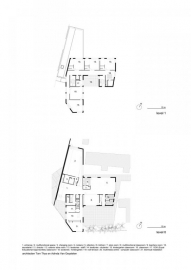
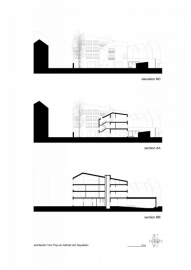
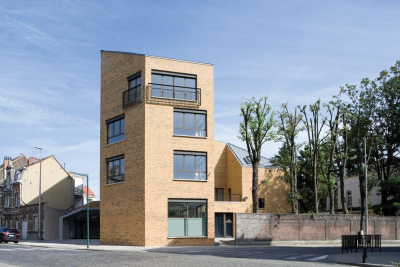

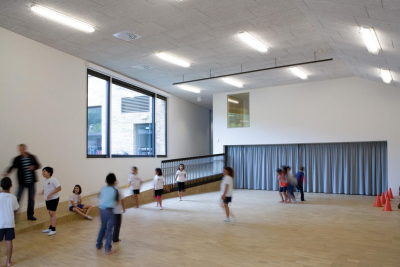
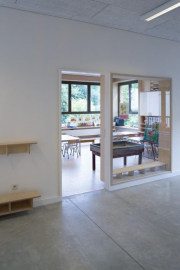
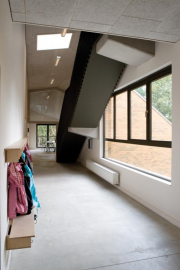
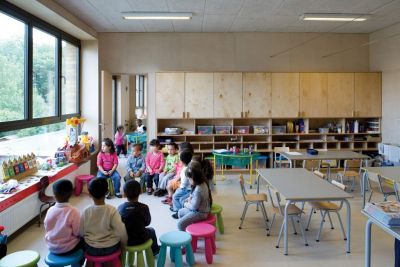
 copy.jpg)
